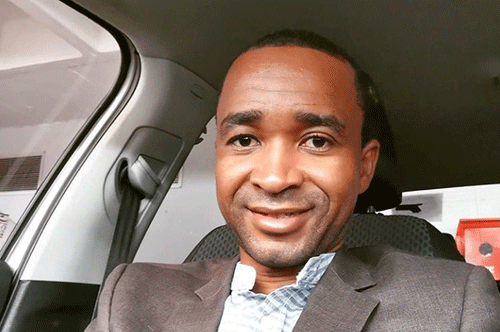Nelson Tuhafeni Kalangula
The health sector has been reported before to be short on supplies, such as medicine.
During Covid-19 times, we ran short on beds, and bed sheets appear to be old and have not been replaced in a long while, amongst other things not reported.
I look further at what we lack in support of the hospital service to the people in their localities, which can be lifesaving to many. I talk with interest to have noticed the lack of operational helipads in any of our hospitals countrywide. It is a very interesting case when you put it to mind. Why is it that our hospitals do not have any aviation mode of assistance in a country that has a record high number of road accidents, especially during holiday seasons, and most tourists are part and parcel of these accidents on the road?
How do we introduce an approach into any hospital to bring in casualties within lifesaving time via the air by using machines like helicopters?
One would doubt if our current government is really for the well-being of their voters – because in the absence of helipads at Katutura Hospital, a newly upgraded multi-million-dollar political party headquarters is built across the road opposite the hospital.
The headquarters building has a helipad, but the people›s essential and critical aid hospital does not have one, which brings up questions in the leadership of today.
I have heard of ideas for air ambulance in the past, but it seems like the preparation never materialised due to the support of the idea, and most probably due to a lack of resources to support such services.
How does the line ministry, under which aviation falls, plan on matters of this nature?
Do we welcome new innovative ideas that promote growth, or do we just maintain what we found in place?
How far have we come on our own to be proud of what we have built to the benefit of our people? Helipads are a necessity in hospitals in today’s times, where one can have traffic jams, which can cause further accidents during emergencies.
In the northern part of Namibia, we speak of Onandjokwe Hospital, which is considered to have been one of the first medical centres/hospitals in northern Namibia.
Strategically, patients are to be seen and treated at a referral or regional hospital to promote decentralisation before they can be recommended by a State doctor to the specialists, which can often only be found in Windhoek.
What have we done, as an independent Namibia, to ensure growth in the health sectors, besides building small clinics?
When one thinks deeply, how can we give our people the best health care if we do not build State hospitals with other supporting facilities as a means of combating unemployment and ensuring welfare and well-being?
We have an overwhelming number of unemployed doctors, and we seem not to have an immediate solution for them because we failed to build State hospitals and rather focused on capitalising and profiting from the sector at the hands of the few at a greater expense of the Namibian majority, trying to do better.
Middlemen have become another issue in this sector, and they are biting the development of many sectors.
The point is that facilities as costly, as helipads are essential but out of reach due to our misalignment and the inability to tackle and solve the smaller and less costly issues in the sector, such as sufficient ambulances in each constituency. Medical essential services have become expensive, yet the absence of facilities that can be lifesaving is obvious.
The idea should be to develop to become a developed country, and these indicators are what we are rated on when global assessments are conducted on us, as a country.
There are several helipads in Namibia, but not in many health centres, some of the most notable ones include:
The helipad at Windhoek Eros Airport and HKIA, which serves Windhoek.
The helipad at Etosha National Park, is a wildlife reserve home to many different animals, including lions, elephants and rhinos.
The helipad at Swakopmund, a coastal town, known for its beaches and desert tours.
The helipad at Walvis Bay at its airport serves the town of Walvis Bay.
Andimba Toivo yaToivo Airport serves as a pad for Ondangwa, Ongwediva and Oshakati hospital. Rundu and Mpacha now serve the north-east of Namibia; in the South, we have Keetmanshoop, Oranjemund and Lüderitz Airports to serve in the southern regions.
This, however, can be made easier by developing and building state hospitals with all the facilities to ensure efficiency in operations, and for the sake of the development and well-being of the Namibian people in different regions and constituencies.
The construction of a helipad must comply with the regulations of the Namibia Civil Aviation Authority. These regulations specify the size, lighting and markings of the helipad, as well as the safety procedures that must be followed. This will require aviation expertise and, in turn, create employment.
Helipads are used for a variety of purposes:
Tourism: to take tourists to remote or difficult-to-reach places, such as the Namib Desert or the Skeleton Coast.
Medical evacuation: to quickly transport patients to hospitals in cases of emergency.
Search and rescue: to search for and rescue people who are lost or injured in remote areas.
Business: to transport executives and other VIPs to different locations.
Government: for a variety of purposes, such as border patrol and disaster relief.
The writing is not limited to the lack of helipads but also to motivate our heads to be people-centric during development decision-making – and for the most part, to drive thinking and provoke thoughts for the betterment of the overall Namibians.
*Captain Nelson Tuhafeni Kalangula is a former Namibian Air Force helicopter pilot. He holds a certificate in Aviation Safety and Aircraft Accident Investigation, a Bachelor of Commerce (Hons) and B-Tech in Business Administration.


